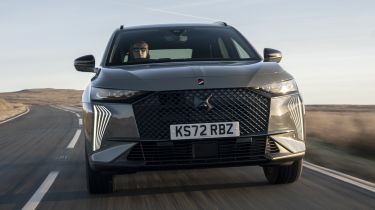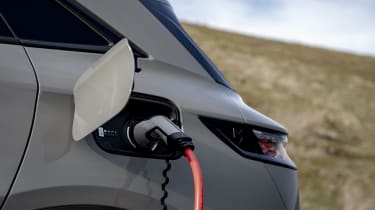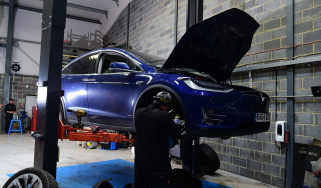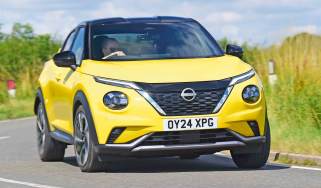DS 7 review - MPG, CO2 and Running Costs
It’s not a cheap car to buy and residual values are weak, but at least the reliance on diesel and plug-in powertrains means that no DS 7 should be too expensive to fuel

If you can see past the expensive list prices of the DS 7 compared to its more established premium rivals, possibly because you’re leasing one or choosing it as a company car, running costs shouldn’t be too bad.
The BlueHDi turbo diesel is rated at 49 to 53mpg on the WLTP combined cycle with CO2 emissions between 100 and 106g/km. With the E-Tense options, the usual caveat that plug-in hybrid efficiency depends greatly on how often you charge the battery is needed but the 225 can officially return between 178 and 250mpg, the 300 is in the 193 to 250mpg ballpark and the 360 is significantly lower at 161mpg. All versions are in the 26 to 40g/km range for CO2 emissions.
Electric range, battery life and charge time
The DS 7 E-Tense's battery has grown to 14.2kWh in the latest models and this saw the quoted maximum electric driving range increase to 43 miles in the 225. Our testing indicates that you can probably expect to achieve something in the low to mid thirties. The 4x4 E-Tense 300 is only a single mile down with a 42-mile maximum range but the 360 can only manage 36 miles on the official tests.
The E-Tense 225 model only has a 3.7kW on-board charger as standard, meaning it'll take roughly three hours to fully recharge the battery from a home wallbox. The 300 and 360 models can charge at up to 7.4kW, so you can get a 100% charge in an hour and 45 minutes. In all cases, you’re looking at seven hours for a full charge from a standard three-pin socket. The regenerative braking system is controlled via a button on the gear lever and can add up to 20% to the electric range in urban traffic, according to DS.
Insurance groups
In entry level Performance Line trim, the BlueHDi diesel occupies insurance group 26 while the E-Tense 225 is in group 34. At the top of the range, the E-Tense 360 La Premiere is in group 42. For comparison, the diesel Jaguar E-Pace starts in group 28 while a PHEV in plush R-Dynamic spec is also in group 42.
Our Car Tax Checker tool lets you check your tax status and renewal date in seconds. Check your VED car tax now...
Depreciation
Predicted residual values aren’t too alarming but the most popular and in-demand versions of key rivals such as the Jaguar E-Pace and Audi Q3 make for better reading, and the DS 7’s worth after three years and 36,000 miles also lags behind the Volvo XC40.
DS 7 values are all in the region of 48 per cent of the car’s original asking price so trim and engine don’t make a huge amount of difference. The Volvo XC40 models with internal combustion engines range from 57 to 61 per cent however, while the Jaguar E-Pace will still be worth 56 to 60 per cent of its original value.
To get an accurate valuation on a specific model check out our valuation tool...










